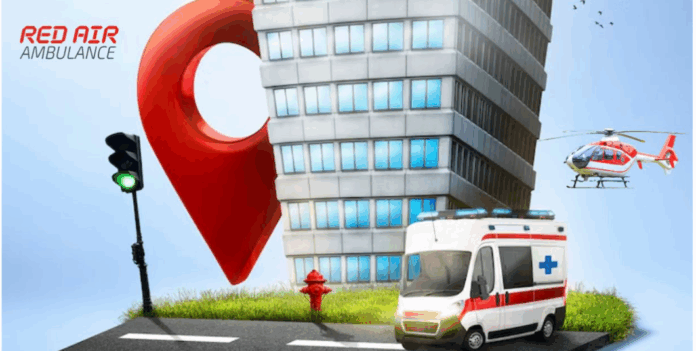In the heart of India, Indore is quickly gaining recognition not just for its cleanliness and rapid urban growth, but also as a rising hub for air medical transport. As healthcare infrastructure expands and the demand for time-sensitive emergency services grows, air ambulance services in Indore are stepping up to meet critical needs.
This blog explores the reasons behind this emergence, the advantages it offers to patients in and around Madhya Pradesh, and how Indore’s location, healthcare evolution, and connectivity make it a strategic player in aerial medical evacuations.
- Strategic Geographic Location
Indore’s central location in India makes it ideal for facilitating intercity medical transfers. Whether patients need to be transported to Delhi, Mumbai, Bengaluru, or Hyderabad, Indore serves as a midpoint, reducing travel time and allowing swift movement across regions.
- Acts as a transit hub for medical evacuation
- Shortens flight routes from nearby rural or tier-2 cities
- Easy access for patients from Chhattisgarh, Maharashtra, Rajasthan, and Uttar Pradesh
- Growing Network of Multi-Specialty Hospitals
Indore is home to some of Madhya Pradesh’s most advanced hospitals, including:
- Bombay Hospital
- CHL Hospitals
- Aurobindo Hospital
These facilities provide specialized care in cardiology, neurology, oncology, and trauma, increasing demand for patients to be transferred from smaller towns where such expertise is unavailable.
- Availability of Advanced Air Ambulance Services
The city is now served by multiple professional air ambulance operators offering:
- ICU-equipped aircrafts
- Ventilator support, cardiac monitoring, and onboard oxygen
- Highly trained medical crews, including emergency doctors and paramedics
This capability allows patients to be stabilized in the air, ensuring continuity of care from takeoff to hospital arrival.
- Increasing Medical Tourism and Referrals
Indore has become a referral center for patients from rural MP, Gujarat, and eastern Maharashtra. The city sees patients traveling for:
- Organ transplants
- Complex surgeries
- Post-trauma rehabilitation
As demand grows, air transport is increasingly used to expedite critical referrals and connect patients with super-specialty hospitals in other cities.
- Government Support and Improved Airport Infrastructure
The Devi Ahilya Bai Holkar Airport in Indore has modern facilities, allowing:
- Rapid takeoffs and landings for emergency flights
- Coordination with air ambulance teams and private aircraft operators
- Efficient ground ambulance-to-aircraft transfers
Support from local authorities in permitting and logistics further accelerates the process.
- Faster Response in Time-Critical Situations
In cases of heart attacks, strokes, trauma, neonatal emergencies, and organ transport, every second matters. Indore’s air ambulance services are trained to:
- Coordinate with sending and receiving hospitals
- Offer rapid documentation and clearances
- Stabilize and transport patients within the golden hour
- Integration with Remote and Rural Regions
Air ambulances in Indore are increasingly used to reach patients in:
- Tribal belts of Madhya Pradesh
- Remote towns lacking critical care facilities
- Disaster-affected or accident-prone areas
This integration ensures that advanced care is accessible even in regions where roads can’t reach in time.
Conclusion
Indore’s transformation into a Central India hub for air medical transport is a testament to its expanding healthcare infrastructure, central location, and growing demand for critical care solutions. The city’s ability to connect rural, urban, and metro regions makes it a vital lifeline in the Indian air ambulance ecosystem.
As awareness grows and infrastructure continues to evolve, Indore’s air ambulance services are set to save more lives, both within and beyond the boundaries of Madhya Pradesh.

